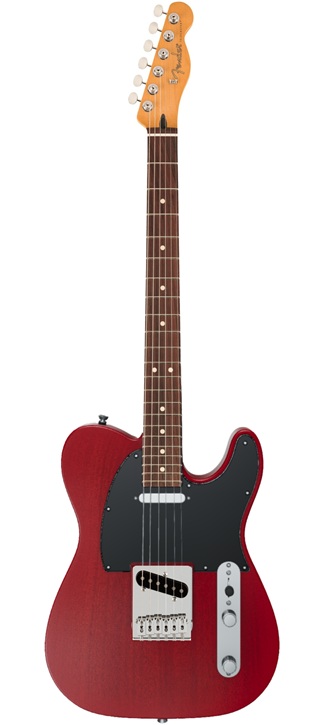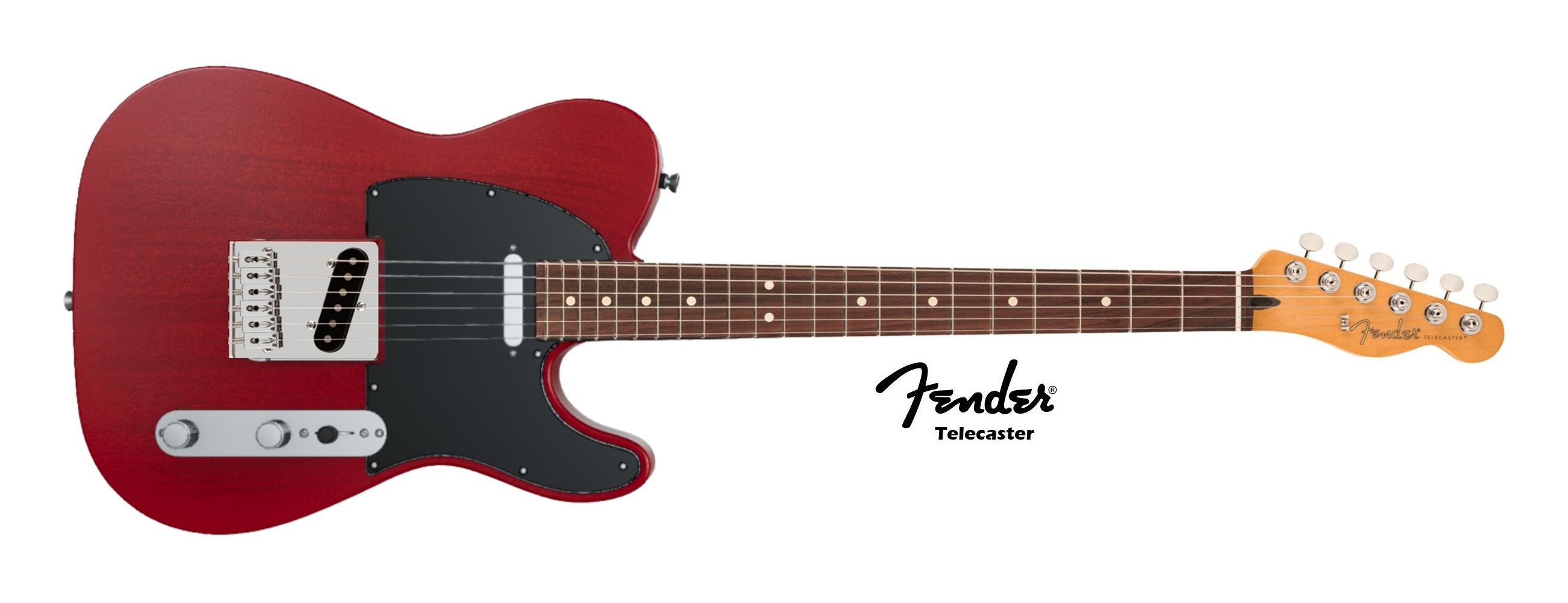
| Fender Telecaster |
| The Specs |
 Year:
Year: 2025
Builder: Fender
Series: Player II
Model: Telecaster
Color: Transparent Cherry
Hardware Finish: Nickel/Chrome
Serial Number: MX25106850
Body: Chambered Mahogany
Body Finish: Gloss Polyester
Body Binding: None
Cutaway: Single
Pickguard: Black Bakelite*
Bridge: String-Through-Body Tele
Saddles: 6 Block Steel
Fretboard: Rosewood
Fretboard Binding: None
Fretboard Inlay: White Dots
Neck: Maple
Neck Profile: Modern "C"
Neck Finish: Satin Urethane
Nut: Synthetic Bone
Headstock: Telecaster
Headstock Binding: None
Headstock Logo: Fender "Spaghetti" Logo
Tuners: Fender ClassicGear
Neck Pickup: Player Series Alnico 5 Tele
Bridge Pickup: Player Series Alnico 5 Tele
Pickup Switching: 3-Way
Control Knobs: Knurled Flat-Top
Controls: Volume, Tone
Case: Fender deluxe hardshell case
Body Size/Shape: Telecaster
Frets: 22 Medium Jumbo
Frets to Body: 17/20
Fretboard Radius: 9.5"
Scale Length: 25.5"
Nut Width: 1.650"
Body Width: 12.75"
Body Depth: 1.75"
Weight: xlbs xoz
Strings: D'Addario Chromes ECG25 (12-52)
* Modified from original 3-ply Parchment
Many guitarists choose to play certain guitars because those are the ones that their heroes play—and I'm certanly no exception to that. My first love on electric guitar was the Fender Stratocaster, because it seemed like all the guitarists I admired played one.
The other classic Fender electric, the Telecaster, always looked really cool to me—I loved the single cutaway and the elegance of its simple, dependable design—but it wasn't nearly as popular with the blues and rock guitarists I was listening to as the Stratocaster was. And when I tried playing Teles in music stores, I couldn't quite get the sound I was looking for (at that time) out of them.
I bought my first Telecaster mostly based on the look. I was—and still am—a huge fan of Bruce Springsteen, and one day in the early 90's I walked into my local guitar shop with some money burning a hole in my pocket. My main guitar at the time was a sunburst American Standard Stratocaster, and I think my intention that day was to buy another Strat to use as a backup on stage.
But as I walked in, my gaze was immediately drawn to a butterscotch Fender Telecaster with a black pickguard. The wood grain was visible through the transparent finish, and it was gorgeous. It reminded of Springsteen's iconic Telecaster, so I played it and quickly decided I had to have it.
I never ended up using it on stage, because it never quite sounded like "me." And by that, I mean it never sounded like a Stratocaster with the pickup selector switch in positions 2 and 4, which I'd come to think of as "my" sound. And eventually that Telecaster ended up getting sold or traded for something else—but I would go on to try many other Telecasters over the years.
For most of that time, I kept getting drawn back by the iconic appearance of the Telecaster, and thinking that I'd find a use for its famous "twangy" voice. But I never fully embraced the sound of the Tele, and would always end up reverting back to Strats.
That all changed when I started playing mostly jazz. That's when I fell in love with the sound of the neck pickup on a Telecaster. The combination of warmth and clarity works really well for my style—especially with the volume and tone rolled back slightly, which provides a more open/airy sound that I typically only get from hollow or semi-hollow guitars. The chambered mahogany body on this Telecaster also seems to add some extra resonance.
I installed a black Bakelite pickguard in place of the original 3-ply parchment pickguard in order to keep the Tele aesthetically consistent with the rest of the guitars in my collection, which all have transparent cherry finishes and black pickguards. The Bakelite pickguard also minimizes the static buildup that is common on plastic Telecaster pickguards.



 Year: 2025
Year: 2025

